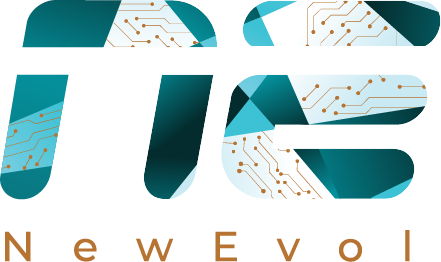The 7 Biggest Cybersecurity Threats Automation Can Help You Avoid

Cybersecurity is a constant battle, and the threats businesses face are growing every day. Staying ahead requires more than just traditional methods—it demands automation. With NewEvol’s AI-powered platform, businesses can leverage automated threat mitigation and prevention to detect, respond to, and neutralize threats in real-time—stopping attacks before they escalate and minimizing potential damage.
In this blog, we’ll explore the top 7 cybersecurity automation threats that can help prevent and how leveraging this technology can keep your systems secure and your response times lightning fast.
1. Malware and Ransomware Attacks
- Impact: Malware and ransomware are two of the most damaging cyber threats. Malware can compromise systems, steal data, or cause service disruptions, while ransomware encrypts files and demands payment for their release.
- How Automation Helps: NewEvol’s platform uses AI to scan and detect malicious activity in real-time, identifying ransomware before it can spread. Automated response mechanisms can isolate infected devices and begin remediation, preventing widespread damage.
- Why it Matters: Speed is key in halting malware and ransomware attacks, and automation drastically reduces response times, stopping attacks before they escalate.
2. Insider Threats
- Impact: Insider threats can come from employees or contractors with access to sensitive data. These threats are often harder to detect, as the malicious activity comes from within trusted sources.
- How Automation Helps: NewEvol’s automated behavioral analysis continuously monitors user actions, looking for anomalies that could indicate insider threats. Alerts can be triggered if any suspicious behavior is detected, enabling quick containment.
- Why it Matters: Insider threats can result in data breaches, fraud, and sabotage. Automated monitoring ensures that any unusual activity is immediately flagged for investigation, reducing the risk of damage.
3. Phishing and Social Engineering Attacks
- Impact: Phishing is one of the most common methods cybercriminals use to access sensitive information. Employees may unknowingly reveal login credentials, causing data breaches. Implementing protection automated threat solutions helps detect and block phishing attempts in real-time, safeguarding your organization from potential attacks.
- How Automation Helps: AI-powered email filters can automatically flag phishing attempts and malicious attachments, preventing them from reaching the inbox. Additionally, automated phishing simulations can train employees to recognize suspicious messages.
- Why it Matters: Automation not only blocks phishing attempts but also enhances the organization’s security awareness, drastically reducing the chances of falling victim to such attacks.
4. Distributed Denial-of-Service (DDoS) Attacks
- Impact: DDoS attacks overwhelm servers with excessive traffic, causing outages and preventing legitimate users from accessing services.
- How Automation Helps: NewEvol’s platform can detect sudden spikes in traffic and trigger automatic mitigation strategies, such as redirecting traffic or activating additional resources to handle the load.
- Why it Matters: Automated responses allow businesses to quickly respond to DDoS attacks[1] without waiting for human intervention, ensuring continuous service availability. Leveraging cyber security automation tools helps detect threats, trigger instant responses, and minimize downtime — keeping your systems secure and operational.
5. Data Breaches
- Impact: Data breaches expose sensitive customer and organizational data, leading to financial losses, reputational damage, and legal consequences.
- How Automation Helps: Automated vulnerability scans can detect weaknesses in security systems, triggering alerts for immediate patching. Automated breach detection systems can identify abnormal data access patterns and prevent unauthorized exfiltration.
- Why it Matters: The faster a breach is identified, the quicker steps can be taken to minimize its impact. Automation ensures early detection and response, preventing massive data leaks.
6. Vulnerability Exploitation
- Impact: Cybercriminals actively target unpatched vulnerabilities in systems and software to gain unauthorized access, making vulnerability management a top priority. Implementing automated threat management helps identify, prioritize, and mitigate these risks in real-time — reducing exposure and strengthening your security posture.
- How Automation Helps: NewEvol’s platform automates vulnerability scanning and patch management, ensuring that critical patches are applied without delay and preventing exploits before they can occur.
- Why it Matters: Timely patching is essential for protecting systems from known vulnerabilities. Automation streamlines this process, reducing human error and patching windows.
7. Advanced Persistent Threats (APTs)
- Impact: APTs are long-term, targeted attacks where cybercriminals infiltrate networks and remain undetected for extended periods, often stealing data or causing ongoing damage.
- How Automation Helps: NewEvol’s platform uses automated threat hunting to detect patterns associated with APTs. By continuously monitoring network traffic and system activity, it can spot subtle indicators of a persistent attack and trigger containment actions.
- Why it Matters: The longer an APT goes undetected, the more damage it can do. Automated detection allows for faster identification, cutting the attack’s life cycle short.
How Cybersecurity Automation Works
Automation is transforming how modern enterprises approach cybersecurity. In today’s fast-paced digital world, the volume and complexity of cyber threats are increasing, making it difficult for security teams to respond quickly enough using traditional methods. By incorporating automation, organizations can enhance their defenses, reduce response times, and minimize the impact of cyberattacks.
Here’s how automation enhances cybersecurity in modern enterprises:
1. Real-Time Threat Detection
Automation allows for continuous monitoring and real-time detection of threats. AI-driven tools can identify suspicious behavior, unusual traffic, or malware in seconds—often faster than human teams could. This allows businesses to respond to threats before they escalate.
2. Faster Incident Response
Automated systems can immediately trigger predefined response actions, such as isolating affected systems, blocking malicious IPs, or applying security patches. This reduces the window of vulnerability, ensuring a faster recovery from potential breaches.
3. Improved Efficiency and Resource Allocation
With automation handling routine tasks such as threat detection, patching, and log analysis, security teams can focus on more complex issues. This optimizes resources and reduces the risk of burnout among cybersecurity professionals.
4. Reduced Human Error
Manual processes are prone to mistakes, especially when dealing with large volumes of data. Automation eliminates the risk of human error by standardizing responses and ensuring consistency in security measures.
5. Proactive Defense Mechanisms
Automation doesn’t just respond to incidents; it can also anticipate them. Automated systems can proactively identify vulnerabilities, conduct regular scans, and patch weaknesses before they are exploited by attackers.
6. Scalability
As businesses grow, so do the threats they face. Automation scales easily to meet the needs of expanding networks and increasing data volumes. This allows organizations to maintain a robust security posture without needing to constantly hire additional security staff.
7. Enhanced Compliance
Automation can help organizations stay compliant with industry standards by ensuring regular assessments, audits, and updates to security measures. Automated reporting simplifies compliance processes, making it easier to generate and maintain required documentation.
Helpful Cybersecurity Automation Tools
Automation tools are becoming increasingly vital in staying one step ahead of cyber threats. These tools empower organizations to detect, prevent, and respond to attacks more efficiently and in real time. Here are some of the most powerful cybersecurity automation tools that can significantly enhance your defense strategies:
1. SIEM (Security Information and Event Management) Tools
SIEM tools collect and analyze security data from across your network, providing real-time alerts and incident reporting. Automation within SIEM systems helps prioritize threats, investigate suspicious activities, and generate reports, saving time and reducing the risk of overlooked vulnerabilities.
2. SOAR (Security Orchestration, Automation, and Response) Platforms
SOAR platforms automate repetitive tasks like ticketing, incident triage, and response actions. These tools integrate with your existing security infrastructure and provide automated workflows that help security teams manage incidents, reducing manual intervention and speeding up response times.
3. Endpoint Detection and Response (EDR)
EDR tools provide real-time monitoring and automated responses to threats at the endpoint level. They detect suspicious activity on devices like laptops and servers and automatically isolate or remediate affected endpoints, preventing the spread of malware or ransomware.
4. Network Traffic Analysis (NTA)
NTA tools use machine learning to analyze network traffic for unusual patterns or behaviors that might indicate a cyberattack. Automated alerts and responses can be triggered when suspicious activity is detected, allowing teams to take action without waiting for manual oversight.
5. Threat Intelligence Platforms (TIPs)
TIPs aggregate, analyze, and automate the sharing of threat intelligence data. By automating the ingestion of threat data from multiple sources, these platforms help security teams stay up-to-date with the latest cyber threats and prioritize responses accordingly.
6. Automated Vulnerability Scanners
Automated vulnerability scanners continuously scan your network for weaknesses, ensuring that vulnerabilities are identified and patched before they can be exploited by attackers. These tools can generate reports and even trigger automated patching workflows for critical vulnerabilities.
7. Phishing Detection Tools
Automated phishing detection tools analyze emails and websites to identify and block phishing attempts. They can also automatically simulate phishing attacks to help train employees to recognize suspicious emails, reducing the chances of a successful attack.
8. Firewall Automation Tools
Modern firewalls with automation features can automatically adjust security policies, block malicious IP addresses, and respond to attacks in real-time based on predefined rules. This prevents unauthorized access and reduces manual firewall rule management.
9. Identity and Access Management (IAM) Solutions
IAM tools automate user authentication, access control, and identity verification processes. They help ensure that only authorized users can access sensitive data and applications, preventing identity-based attacks and minimizing the impact of stolen credentials.
10. Automated Incident Response Tools
These tools automate incident response workflows, from detection to containment and remediation. They can trigger automatic responses to specific threats, such as blocking malicious IPs, isolating infected systems, and notifying the security team—all without manual intervention.
End Note
Incorporating automation into cybersecurity strategies is no longer a luxury—it’s a necessity. As cyber threats grow in complexity and scale, relying on manual processes alone is no longer enough to protect sensitive data and systems. Automation tools help organizations detect and respond to threats more swiftly, reduce human error, and free up valuable resources for more strategic tasks. By leveraging the right cybersecurity automation tools, businesses can stay ahead of potential risks and strengthen their overall security posture, ensuring a more resilient defense against ever-evolving threats.
Stay Ahead of Cyber Threats
Don’t wait for a breach to happen—automate your cybersecurity today. Contact NewEvol to learn how our AI-driven solutions can protect your business from the latest threats.
FAQs
1. What is the top cybersecurity threat?
Ransomware, phishing, and insider threats are among the top cybersecurity threats today. These attacks can result in data breaches, financial loss, and damage to reputation.
2. How does automation help cybersecurity?
Automation boosts cybersecurity by reducing human error, speeding up threat detection, and enabling faster response to incidents, allowing teams to focus on critical tasks.
3. What are the threats to cybersecurity?
Key cybersecurity threats include malware, ransomware, phishing, insider threats, DDoS attacks, data breaches, and man-in-the-middle attacks.
4. What are the solutions for cybersecurity threats?
Solutions include firewalls, antivirus software, encryption, multi-factor authentication (MFA), regular updates, and automated threat detection tools.
5. What is the strongest prevention against cyber threats?
Multi-layered security, including firewalls, encryption, regular updates, strong access control, and cybersecurity automation, is the most effective prevention strategy.

